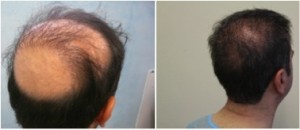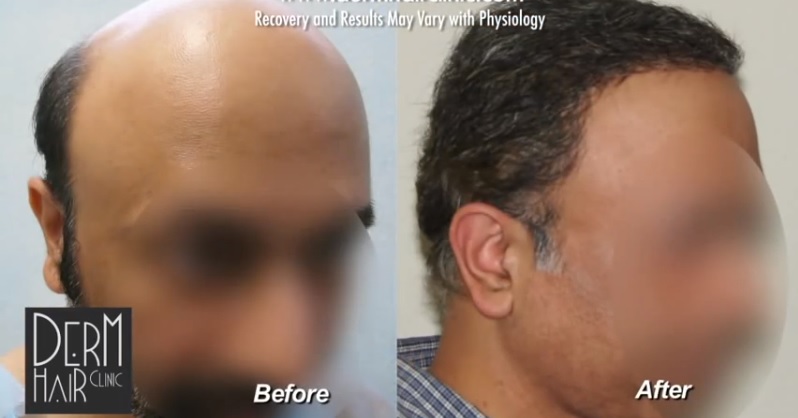However, the connection between heart disease and baldness is more apparent with balding in a particular area of the head. The fact that baldness can signal heart disease also gives patients who suffer from hair loss to not only be mindful of their physical appearance but also their lifestyle choices.
Research correlates that men with hair loss on the crown of the head — not those with a receding hairline and hair loss along the forehead — have a higher risk of heart disease, according to doctors at Brigham and Women’s Hospital in Boston, Mass. Even more so, men with high cholesterol, high blood pressure and crown hair loss are three times more likely to have heart disease than those with high cholesterol and blood pressure. The fact that this type of baldness can signal heart disease has both physicians and patients more in tune with how baldness can signify other severe health issues.
THE POTENTIAL LINK HOW BALDNESS CAN SIGNAL HEART DISEASE
Study results included 22,000 men between 40- and 84-years-old. Fifteen hundred men reported some form of coronary trouble, such as heart disease, eleven years into the research; 62 percent were bald.
Researchers hypothesis that baldness can signal heart disease, and may lead to heart disease, due to high testosterone levels. High testosterone levels are usually found in bald men. Some evidence suggests that testosterone potentially affects atherosclerosis and blood clotting.
While the news is disconcerting, men can take a proactive stance when dealing with how baldness can signal heart disease. Men who notice crown hair loss should be proactive about their heart health to reduce their risk since heart disease is largely preventable. While genetics are not changeable regarding disease risk and hair loss, lifestyle changes are very beneficial. Lifestyle choices include not smoking, regular exercising, adhering to a healthy diet, and monitoring blood pressure and cholesterol levels.

MALE PATTERN BALDNESS AND CROWN HAIR LOSS
Androgenic alopecia, or male pattern baldness, is the most common form of hair loss in men. There is a well-defined pattern of hair loss that begins above both temples, followed by a receding hairline and crown hair loss. Significant loss requires hair restoration.
Of course the fact that crown hair loss and baldness can signal heart disease should be discussed with your primary care physician. Once male pattern baldness is established as the cause of hair loss and balding, consult with a hair specialist for the options of hair transplants.
Crown hair restoration is an important aspect of a hair transplant. The crown is the highest rear point of the head. Even minimal hair loss in this area is highly visible to others and difficult to hide.
Crown Hair Restoration
The crown is a semi-circular area just behind the summit of the skull. It begins where the top of the head curves downward to the back and ends just above the occipital bone. When restoring hair loss in the crown, surgeons must consider:
- The whorl
- Size
Follicular unit extraction (FUE) is an ideal solution to crown hair loss. It entails the extraction of individual follicular units one at a time with harvesting is done using 0.8 to 1.2 millimeter punches. One of the main benefits is no linear scars are created on the patient’s head, making it a viable option for those who prefer to have short hair.
Schedule a consultation with Dr. Sanusi Umar to discuss options for hair restoration.

